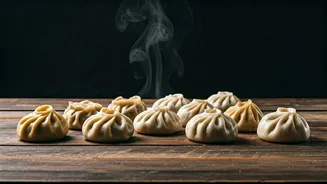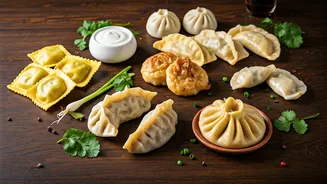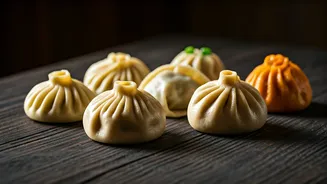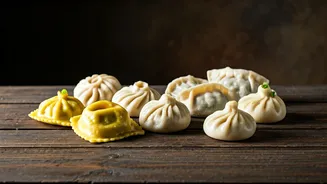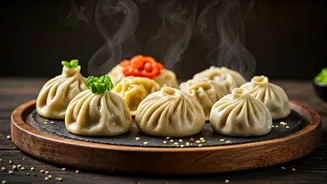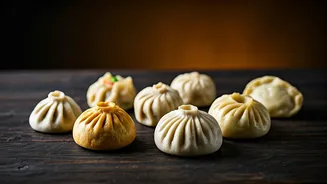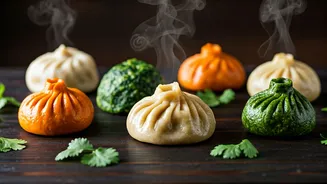Italian Ravioli: A Classic
Ravioli, hailing from Italy, are small, pasta-based dumplings typically filled with a delightful medley of cheese, meat, or vegetables. Their preparation
involves two thin sheets of pasta dough that are cut and sealed around the filling. These little pockets of deliciousness are then cooked, usually by boiling. Served with a simple sauce like butter and sage, or a richer tomato-based sauce, ravioli are a versatile dish that provides an amazing dining experience. The cultural connection of ravioli to Italian families shows the strong bond of food and sharing.
Chinese Jiaozi: Iconic Dumplings
Jiaozi, originating from China, are crescent-shaped dumplings that are a staple in Chinese cuisine. These dumplings usually have a filling of minced meat and vegetables, wrapped in a thin dough. They can be cooked in numerous ways, including boiling, steaming, or pan-frying. They're often served with a dipping sauce of soy sauce, vinegar, and chili oil. Jiaozi have a significant role in Chinese culture, often eaten during festivals and special occasions as a symbol of wealth and prosperity.
Russian Pelmeni: Savory Bites
Pelmeni are small, meat-filled dumplings that are a cornerstone of Russian cuisine. These are usually filled with seasoned ground meat and wrapped in thin, unleavened dough. Typically, they are boiled and served with sour cream, butter, or vinegar. The simplicity of their preparation makes them a comforting and versatile dish, perfect for family meals or celebratory feasts. Pelmeni often reflect the harsh winters of Russia, which require easy to prepare, high-calorie foods.
Japanese Gyoza: Crispy Delights
Gyoza, which made their way to Japan from China, are pan-fried dumplings with a crispy bottom and a soft, steamed top. The fillings often include a combination of ground meat (usually pork), cabbage, and chives, seasoned with garlic and ginger. They are often served with a dipping sauce of soy sauce, vinegar, and chili oil, similar to Chinese jiaozi. They are a beloved staple in Japanese cuisine and can be found in restaurants and homes across the country, showing the adaption of recipes.
Nepali Momo: Himalayan Flavors
Momo, from Nepal, are steamed dumplings that have become a popular street food and household staple. The traditional filling is made with ground meat (often yak or chicken), mixed with onion and spices, all wrapped in a simple flour dough. Served with a variety of dipping sauces, ranging from mild tomato chutney to fiery chili paste, momos offer a taste of the Himalayas. They're a symbol of community and are enjoyed during festivals and gatherings.
Polish Pierogi: Comfort Food
Pierogi, coming from Poland, are boiled, baked or fried dumplings that are often filled with potato, cheese, sauerkraut, meat, or fruit. The dough is usually made from flour, water, and sometimes eggs, and is formed into small, semi-circular pockets around the fillings. Pierogi are typically served with toppings such as sour cream, fried onions, or butter, offering a comforting and satisfying meal. They are a beloved comfort food, often associated with family traditions and festive occasions, reflecting the Polish culture.
